There are artists–painters, dancers, musicians, photographers–for whom you have an immediate affinity. For me, that’s Saul Leiter. He was born in Pittsburgh, Pennsylvania in 1923; his father was a rabbi, a Talmudic scholar of some repute. It was only natural that Saul Leiter would follow in his father’s footsteps. He found himself enrolled at the Cleveland Theological College.
But he didn’t want to be a rabbi; he wanted to be a painter. So in 1946, at the age of 23, Leiter quit his religious studies and moved to New York City to study art and painting under Richard Pousette-Dart. Pousette-Dart was one of the early proponents of Abstract Expressionism—the intensely emotional, anti-figurative form of painting made famous by artists like Jackson Pollock. When Leiter arrived in New York, however, Pousette-Dart was experimenting with another creative form. Photography.
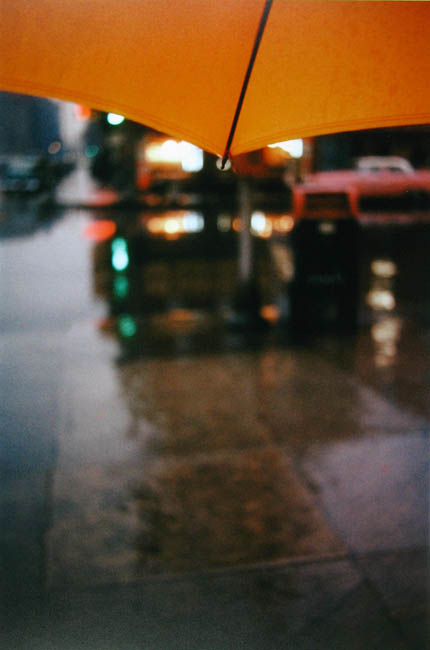
Leiter didn’t abandon painting (he would later exhibit his canvases alongside such notables as Willem de Kooning), but he quickly became deeply intrigued with photography. He bartered a few of his prints for a second-hand Leica and began to explore this new interest…particularly color photography. In 1946 color photography had become practical but the film was still relatively expensive and the processing was quite complicated. ‘Serious’ photographers tended to scorn it. For a student of Abstract Expressionism, though, color added an extra emotional dimension.
His early work with color photography led Leiter into a career as a fashion photographer. For more than two decades he freelanced for a variety of fashion and style magazines…Elle, Vogue, Esquire, Nova. It was an unlikely living for the rabbi’s son. Although Leiter never lacked for work, he remained in the second or third tier of the fashion photography world.
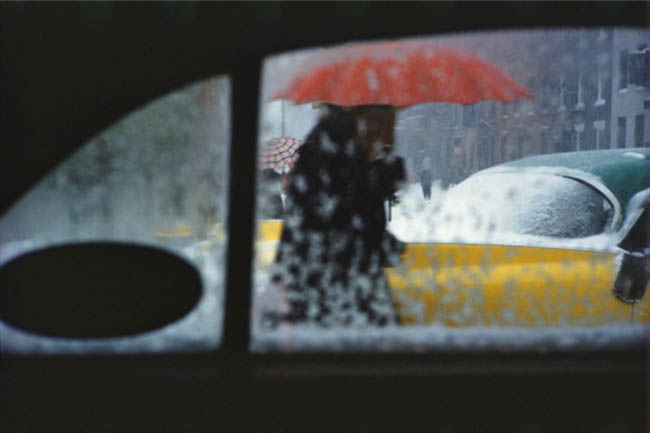
“I was constantly aware that those who hired me would have preferred to work with a star such as Avedon. But it didn’t matter. I had work and I made a living. At the same time, I took my own photographs.”
That last sentence is the operative one: I took my own photographs. In the mid-to-late 1940s, New York City was becoming the center of a new approach to photography: street photography. Other photographers had, of course, turned their attention on street life, and the invention of the 35mm camera certainly shaped the course of street photography. What made street photography different in New York was an aggressive, almost confrontational, documentary attitude.
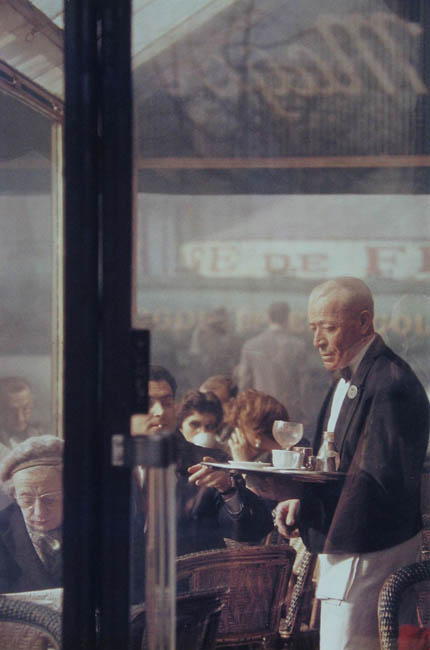
Leiter’s approach was markedly more subtle, more indirect, more abstract, more emotionally expressive, less pugnacious. Instead of getting in the middle of the action, he preferred to stay off to the side, quiet and unnoticed. It was, in many ways, similar to his approach to fashion photography; he was content to let others get the attention so long as he could make the photographs he wanted. Even so, his work impressed other photographers. Edward Steichen included Leiter’s work in two of the earliest shows of color photography at the Museum of Modern Art. Steichen also invited Leiter to participate in the now-famous Family of Man exhibition.
Leiter declined. “It seemed to me that that exhibition was less about photography and more about things I wasn’t sure of.” He not only refused to exhibit his in that show, he stopped showing his private street work altogether.
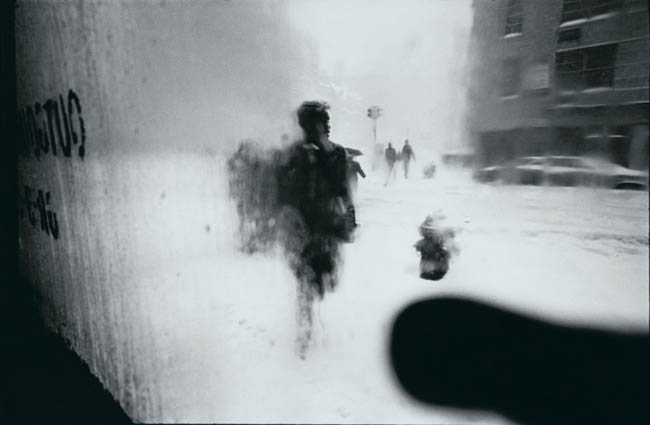
Although he maintained friendships with many prominent New York artists, including photographers Robert Frank and Diane Arbus, Leiter didn’t share his personal work with them. He worked primarily in color transparencies, often buying out-of-date film because he liked the unpredictability of the color shifts. The slides were generally stuck away in cardboard boxes, where they remained until the 1990s.
At that point, for some reason, Leiter decided to start printing them. It would be inaccurate to say they caused a sensation; there’s never been anything sensational about Leiter. But his work did begin to gain a great deal of well-deserved critical attention. Leiter’s photographs are remarkable because they don’t quite fit any of the aesthetics contemporary to the 1940s through the 1960s.
His photographs are delicately balanced between Abstract Expressionism and classic New York street photography. Where most street photographers concentrate on the people in the street, Leiter tended to depict what the people in the street saw. Instead of the visceral, stark black and white of most street work at the time, Leiter worked with a muted color palette. The photographs aren’t merely in color, color is the subject. Color is as important to the work as the people who appear in the images.
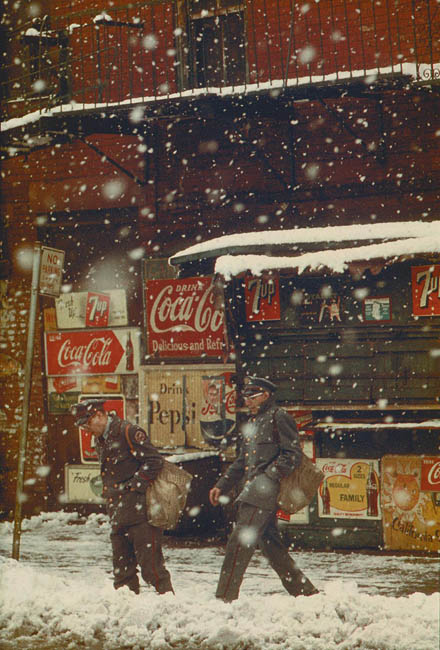
One of the many idiosyncracies of Leiter’s work is his incorporation of weather as an aspect of city life. Inclement weather tends to cause people to withdraw into themselves; they huddle under umbrellas, they wrap themselves in scarves and mufflers, they pull their hats down low over their faces, and they hurry to get off the street. In inclement weather, every person becomes ‘everyperson,’ a generic representation of all city dwellers. They become, in other words, abstract forms and we most clearly see the influence of Abstract Expressionism in those images Leiter shot in bad weather.
Leiter also delighted in adding complexity to the space within the frame of the image. He used translucent or reflective surfaces to add another two or three dimensions to the photograph. He incorporated the barriers that exist organically in the city…the canopies, the temporary walls, the buildings, the doorways, the stenciled letters on windows. The result is a spatially ambiguous image, one that is multi-layered but nevertheless feels surprisingly normal.
“I spent a great deal of my life being ignored,” Leiter said. “I was always very happy that way. Being ignored is a great privilege.” For almost any other artist that would sound like the sourest of sour grapes. One suspects that Leiter is one of those rare photographers who actually means it. Going unnoticed seems to have been an important aspect of his work…both in his approach on the street and in his approach to life in general.
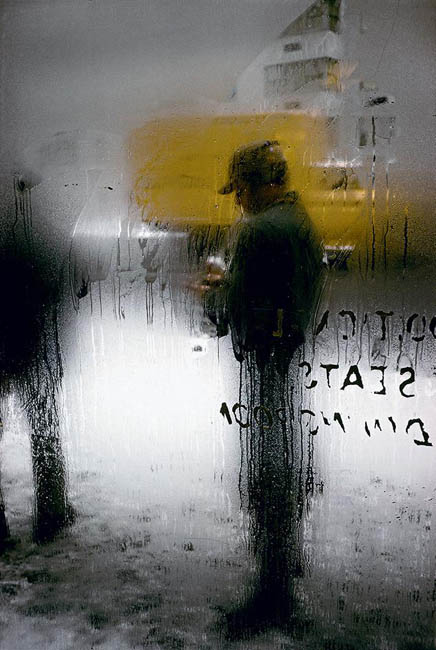
There is nothing of the predatory street work we see of many urban photographers, nothing of the self-promotion we seen in many fashion photographers, nothing of the egocentricity we see in artists who exhibit their work regularly. Leiter, in his isolation, was able to grow in a direction regulated only by his own whims and interests. The result is an eloquent and distinctive expression an individual world view.
Leiter’s recognition and success as an artist has come late in his life, and from all accounts he is as unconcerned with it now as he was half a century ago.
